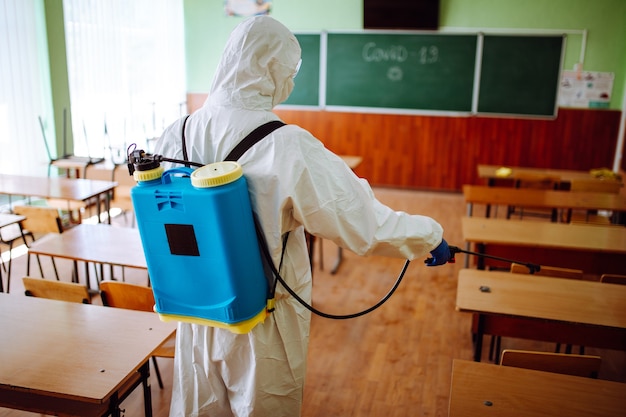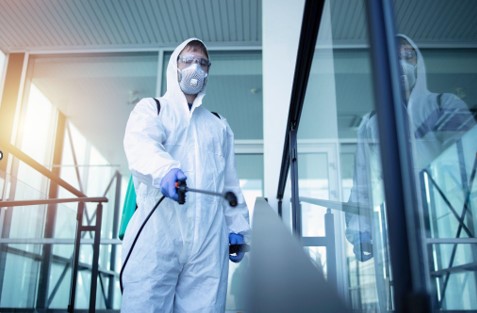Pest control in educational settings is critical for maintaining students’ health and enhancing learning. Uncontrolled pests can trigger allergies, spread diseases, and disrupt the learning environment. Therefore, understanding and implementing comprehensive pest management strategies is paramount. This ensures a safe, pest-free environment conducive to learning while reducing students’ exposure to harmful pesticides. Thus, effective pest control is an essential element of the broader goal of education – fostering the physical and cognitive development of students in a healthy and conducive setting.
1. Common Pest Issues In Schools

Schools often encounter a variety of pests, including rodents, insects like cockroaches and ants, and occasionally, bed bugs. These pests find their way into schools due to the presence of food, water, and ample hiding places. Their presence can be harmful, not only to the school’s property but also to the health and safety of the students and staff.
2. Health And Safety Considerations
The health and safety implications of pests in schools are significant. Pests can carry disease, triggering allergic reactions and even asthma attacks in sensitive individuals. Some pests, like rats, can cause direct harm through bites. Moreover, pesticides used to control these pests can pose their own health risks, making pest management a careful balancing act.
3. Implementing Integrated Pest Management (IPM) For Schools
IPM is a systematic approach that focuses on the long-term prevention of pests or their damage. It incorporates multiple strategies like habitat manipulation, biological control, change of cultural practices, and the use of resistant varieties. In a school setting, IPM can mean regular inspections, sealing entry points, proper waste management, and specific pest treatments only when necessary. The aim is to create a sustainable program with the least possible hazard to people, property, and the environment.
4. Least-Toxic Pest Control Methods
IPM in schools should prioritize the least-toxic methods. Mechanical methods, such as trapping or physical removal, and biological methods, such as introducing natural predators, can be effective against many pests. When chemical control is necessary, schools should use the least-toxic products available, such as boric acid baits for cockroaches or diatomaceous earth for bed bugs.
5. Proper Pesticide Application
When pesticides are necessary, their use should be strictly controlled. Schools must adhere to regulations about when, where, and how pesticides can be applied. This typically includes avoiding applications when students or staff are present, applying only in targeted locations, and using the minimum effective amount.
6. Pest Control In School Landscapes
Landscapes, like school gardens and play areas, can harbor pests. An effective IPM program should include regular maintenance of these areas to eliminate potential pest habitats. This may include proper irrigation management to avoid standing water, pruning vegetation away from buildings, and maintaining healthy turf to deter pests.
7. Pest Control For Food Service Areas

Food service areas attract pests and thus require special attention. An effective IPM program should include strict sanitation standards, including regular cleaning of eating areas, proper food storage, and immediate disposal of food waste. Sealing entry points and inspecting deliveries for pests can also prevent infestations.
8. Pest Control For Dormitories And Living Quarters
Dormitories and other student living quarters can face unique pest challenges, including bed bugs. IPM strategies for these areas can include regular inspections, providing students with information on avoiding pests, and a rapid response plan for any infestations detected.
9. Pest Control Education For Students And Staff
Education is a key component of IPM. Students and staff should be taught to identify common pests and signs of infestation and to understand the importance of preventative measures like proper food storage and waste disposal. Training staff to respond appropriately to pest sightings and potential infestations can also prevent small pest problems from becoming major infestations.
10. Regular Inspections And Monitoring
Regular inspections and monitoring are the backbone of an effective IPM program. Schools should conduct regular inspections of buildings and grounds, looking for signs of pests or potential pest habitats. This also includes monitoring traps or other control measures to assess their effectiveness.
11. Collaboration With Professional Pest Control Services
While much of IPM can be handled in-house, schools should also establish relationships with professional pest control services. These professionals can provide specialized expertise and resources, particularly for larger infestations or more complex pest problems. Additionally, they can help train school staff in IPM principles and techniques. Without worrying about pest control hire a professional. If you wanted to learn more about pest control services, just go and check them out, https://natureshieldpestsolutions.com/index.php/pest-library/pest-control-downtown-columbia/.
In conclusion, professional pest control Columbia, MO companies are integral in ensuring safe, pest-free educational settings. Their expertise allows for efficient pest identification, eradication, and preventive strategies, reducing risks to student health and education. They also ensure the controlled use of chemicals when required, prioritizing safety. By partnering with these experts, schools can focus on their core mission of education, confident that the environment remains conducive for learning and growth, safeguarding the health and well-being of everyone on campus.
Read Also:




























